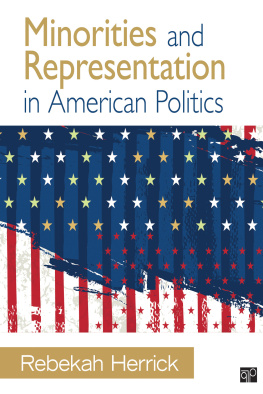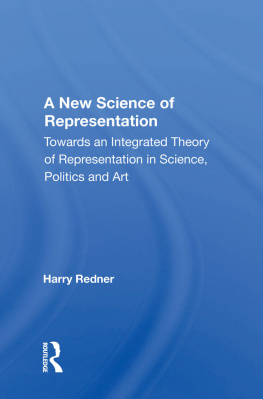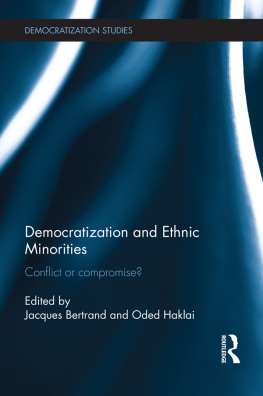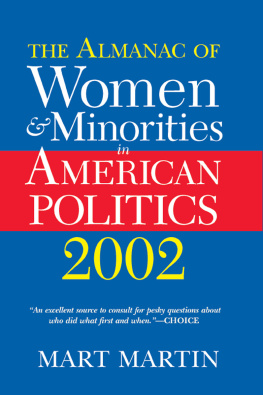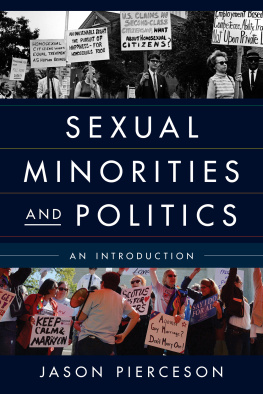Copyright 2017 by CQ Press, an Imprint of SAGE Publications, Inc. CQ Press is a registered trademark of Congressional Quarterly Inc.
All rights reserved. No part of this book may be reproduced or utilized in any form or by any means, electronic or mechanical, including photocopying, recording, or by any information storage and retrieval system, without permission in writing from the publisher.
FOR INFORMATION:
CQ Press
An Imprint of SAGE Publications, Inc.
2455 Teller Road
Thousand Oaks, California 91320
E-mail: order@sagepub.com
SAGE Publications Ltd.
1 Olivers Yard
55 City Road
London EC1Y 1SP
United Kingdom
SAGE Publications India Pvt. Ltd.
B 1/I 1 Mohan Cooperative Industrial Area
Mathura Road, New Delhi 110 044
India
SAGE Publications Asia-Pacific Pte. Ltd.
3 Church Street
#10-04 Samsung Hub
Singapore 049483
Senior Acquisitions Editor: Michael Kerns
Development Editor: Nancy Matuszak
eLearning Editor: Allison Hughes
Production Editor: Tracy Buyan
Copy Editor: Kristin Bergstad
Typesetter: Hurix Systems Pvt. Ltd.
Proofreader: Jan Wickline
Indexer: Virgil Diodato
Cover Designer: Karine Hovsepian
Marketing Manager: Amy Whitaker
Printed in the United States of America
Library of Congress Cataloging-in-Publication Data
Names: Herrick, Rebekah, 1960 author.
Title: Minorities and representation in American politics / Rebekah Herrick, Oklahoma State University, Stillwater, OK.
Description: Thousand Oaks: SAGE/CQ Press, 2017. | Includes bibliographical references and index.
Identifiers: LCCN 2015039009 | ISBN 9781483386836 (pbk. : alk. paper)
Subjects: LCSH: Political participationUnited States. | Representative government and representationUnited States. | MinoritiesPolitical activityUnited States. | Sexual minoritiesPolitical activity United States. | WomenPolitical activityUnited States.
Classification: LCC JK1764. H46 2017 | DDC 323.173dc23 LC record available at http://lccn.loc.gov/2015039009
This book is printed on acid-free paper.
16 17 18 19 20 10 9 8 7 6 5 4 3 2 1
Preface
The United States is rapidly diversifying. Current predictions suggest that in about one generation, whites will no longer be the majority of Americans.1 Not only are there a greater number of racial and ethnic minorities, but each minority group is diversifying as well. The increase in the number of first- generation blacks from Africa and the Caribbean is diversifying the African American community, Hispanic immigrants from Central and South America are diversifying the Hispanic community, and southern and southeastern Asian immigrants are diversifying the Asian American community. In addition to ethnic and racial diversification, there is growing recognition of diversity with regard to sex and gender. There are people who identify as straight men, straight women, gay men, lesbian, asexual, pansexual, bisexual, transgender, and transsexual, as well as people who are intersex.
Unfortunately, the way textbooks tend to approach minorities and politics is to examine groups in isolation. While examining race, ethnicity, or gender in isolation allows for great detailed understanding of individual groups, it misses the importance of understanding the similarities and differences in the politics between the different minority groups, and the dynamic interfaces of multiple groups. For example, the effects of electoral systems vary by minority groups. Candidates of minority groups such as African Americans who still see significant levels of segregation benefit from single-member districts; however, minority groups that are not segregated, such as women, do not benefit from a district with a single member. However, changes in Americans attitudes toward race, ethnicity, and gender have had universally positive effects, improving the electoral prospects of all minority groups.
Examining multiple groups in one text also facilitates greater discussion of intersectionality and intergroup cooperation. Intersectionality suggests there is a matrix, such that each combination of race, gender, class, and ethnicity offers people unique experiences and sources of power and domination.2 For example, non-Hispanic white men have different political interests than African American or Hispanic men or white women. Intergroup cooperation concerns the degree to which different groups work together for shared goals. Finally, a book that integrates race, ethnicity, and gender is more efficient since teachers will only have one textbook and the different minority groups will be examined in a similar fashion. A key goal of the textbook is to systematically examine the politics of several minority groups.
The main minority groups discussed in the book are women; gay, lesbian, bisexual, and transgender (LGBT) Americans; Hispanics; American Indians; Asian Americans; and African Americans. This is not a complete list of important minority groups but includes the groups that have received the most attention by scholars and results in a manageable number of groups to examine.
In order to integrate the discussion of the different groups, I use a representational framework; this is particularly appealing because political minorities are often defined as groups who are underrepresented. Thus, exploring their levels of representation and what affects representation is to explore the essence of minority politics. Additionally, it helps facilitate a discussion of the main topics concerning minorities in American politics: political participation, public policy, identity, public opinion, elite behavior in all three branches of government, court cases, and elections.

